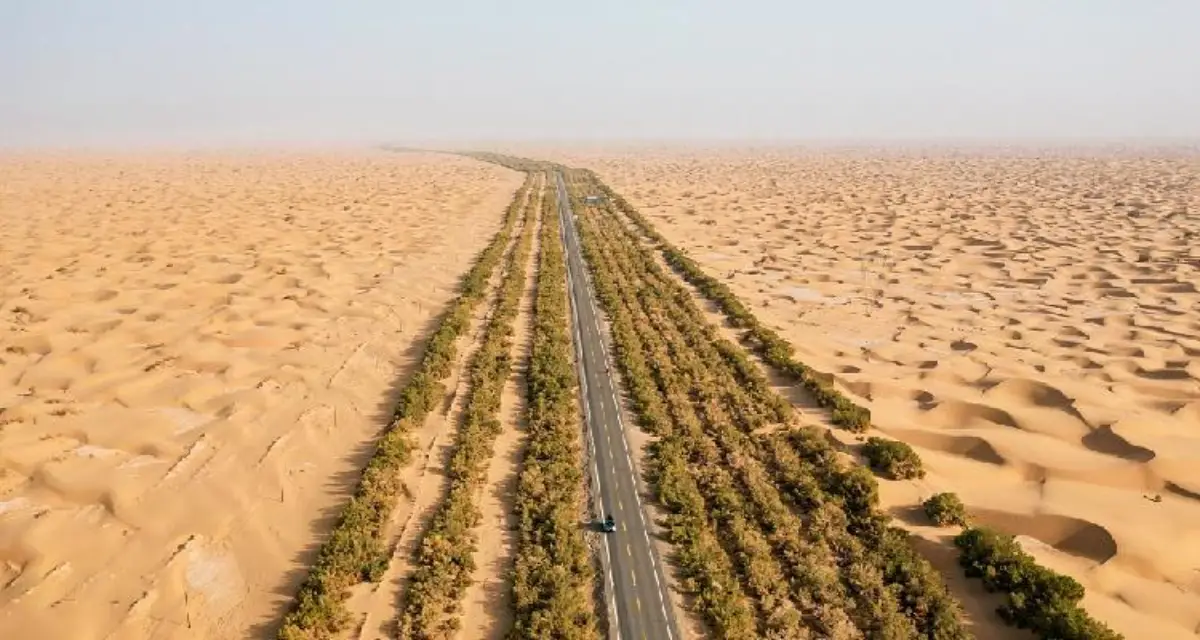

China has achieved a significant milestone in sustainable infrastructure with its Tarim Desert Highway, a pioneering project in photovoltaic irrigation and sand control. Stretching 522 kilometres through the Taklimakan Desert in Xinjiang Uygur Autonomous Region, this highway has emerged as a beacon of green energy, generating over 5 million kilowatt-hours (kWh) of electricity since its inception.
PetroChina, the project's steward, reports that the Tarim Desert Highway is equipped with 86 solar power stations boasting a combined installed capacity of 3,540 kilowatts. These stations collectively produce approximately 1.1 million kWh of electricity daily. This green energy initiative not only powers the highway infrastructure but also supports the irrigation of over 3,100 hectares of ecological protective forests alongside the road.
Wen Zhang, deputy general manager of the PetroChina Tarim Oilfield Branch, highlights the technical prowess behind the project. He explains that all 109 water wells along the highway utilize clean electricity for water pumping and irrigation, thanks to sophisticated photovoltaic power generation and energy storage systems. Engineers have devised three types of photovoltaic power generation equipment to ensure continuous operation, even during periods of low sunlight.
The integration of photovoltaic panels along the desert highway not only generates electricity but also fosters a sustainable environment. Meng Panlei, a power engineer at PetroChina, emphasizes the project's holistic approach, coined as 'sunlight nurturing greenery'. This approach combines solar power generation with vegetation cultivation beneath the panels, contributing to desert control, soil improvement, and effective water resource management. Such comprehensive measures aim to transform the ecological landscape of the Taklimakan Desert, addressing core environmental challenges through innovative technology and sustainable practices.
The environmental benefits of the Tarim Desert Highway project are substantial. By reducing diesel consumption by an estimated 1,000 tonnes annually and cutting carbon dioxide emissions by approximately 3,410 tonnes per year, China underscores its commitment to combating climate change and promoting cleaner energy solutions. These figures underscore the project's role in advancing sustainable development goals on a regional and global scale.
Looking ahead, the success of the Tarim Desert Highway sets a precedent for future green energy initiatives in China and beyond. With ongoing advancements in solar technology and infrastructure development, similar projects could be replicated in other desert regions worldwide, contributing to global efforts to mitigate climate change and enhance renewable energy capacities.
China's Tarim Desert Highway stands as a testament to the transformative potential of green energy infrastructure. By harnessing solar power to drive irrigation and ecological conservation efforts in one of the world's most challenging environments, the project exemplifies innovation and sustainability. As nations worldwide seek to adopt cleaner energy solutions, initiatives like the Tarim Desert Highway offer a blueprint for integrating renewable energy into critical infrastructure, paving the way towards a more sustainable future.
In summary, the Tarim Desert Highway not only powers progress through renewable energy but also sets a precedent for sustainable development in arid landscapes, embodying China's commitment to environmental stewardship and technological innovation.
Also Read: